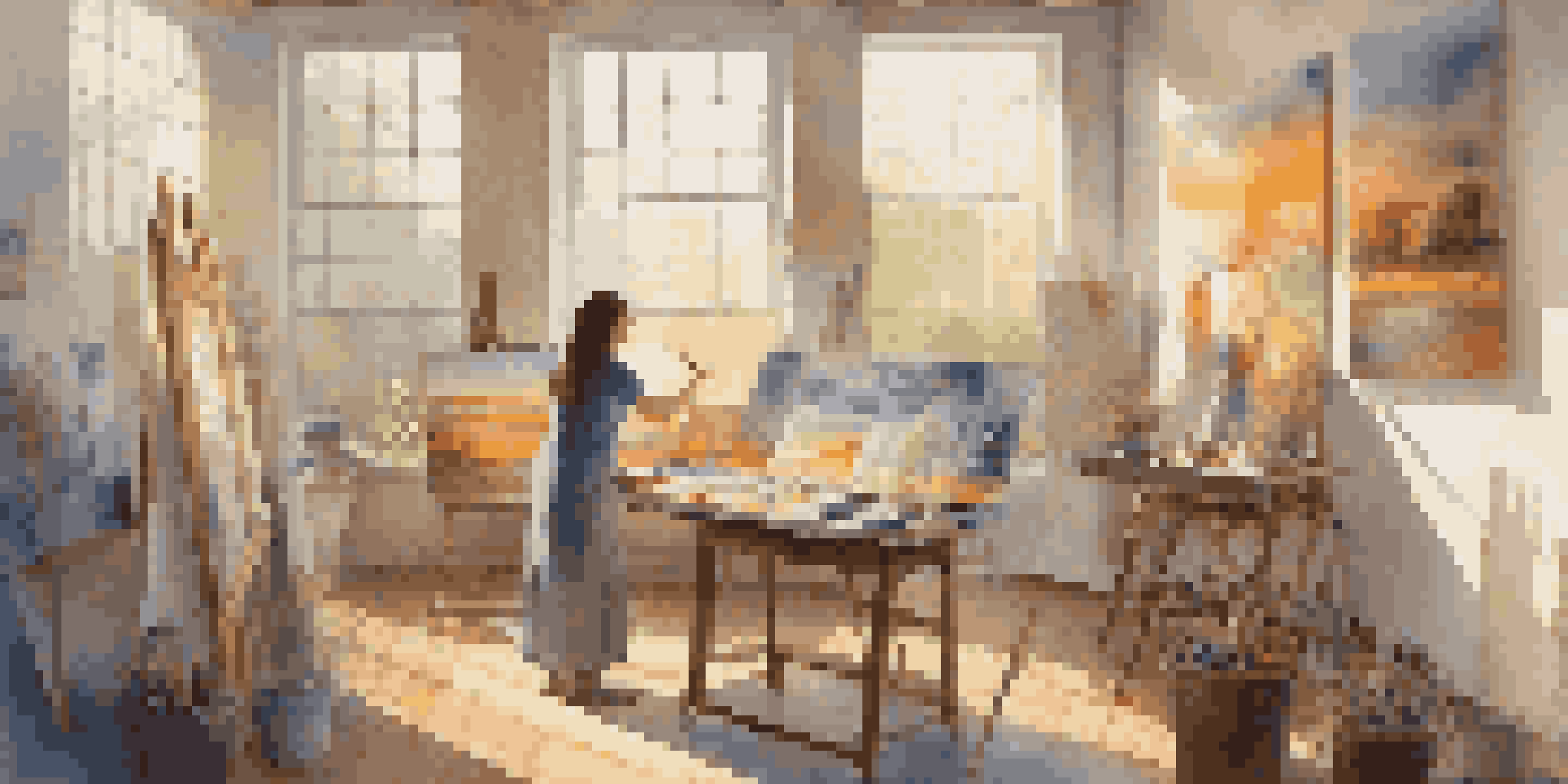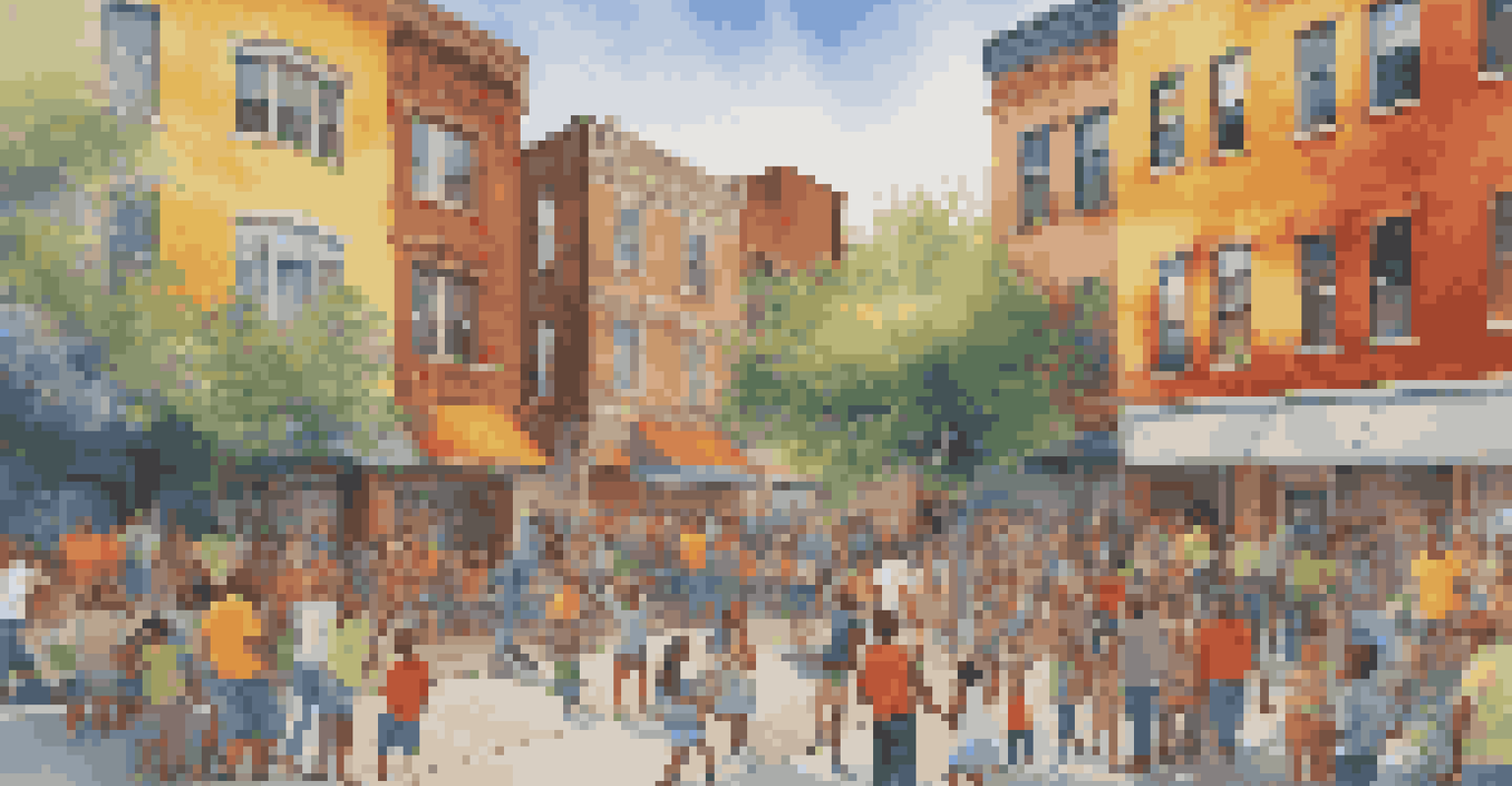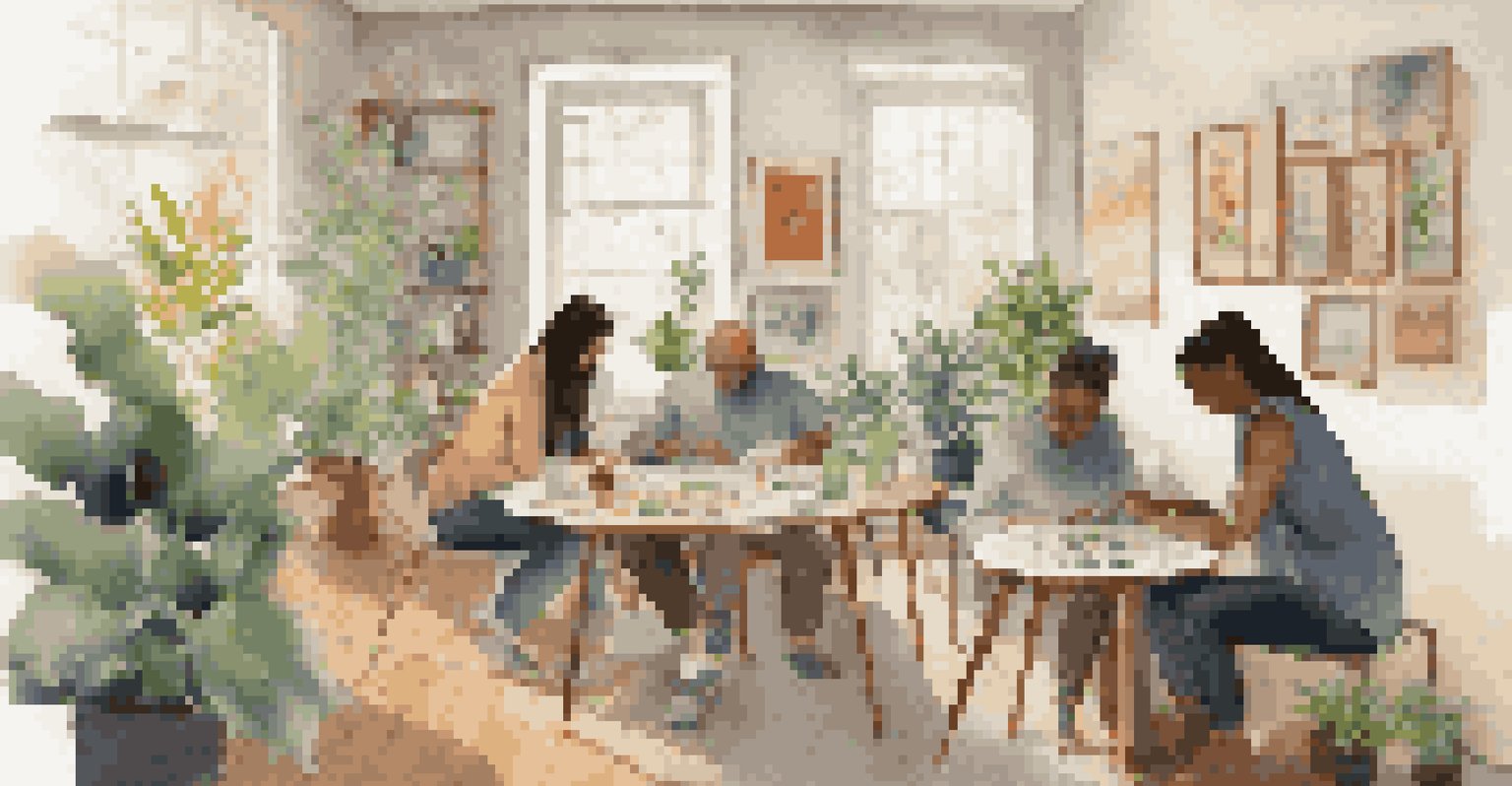Transforming Spaces: The Impact of Art on Personal Growth

Art as a Catalyst for Personal Transformation
Art has an incredible power to prompt personal transformation. When we engage with art, whether through creating or experiencing it, we often find ourselves reflecting on our own emotions and experiences. This introspection can lead to profound insights about who we are and who we want to become.
Art enables us to find ourselves and lose ourselves at the same time.
For example, a person might start painting as a hobby and discover a previously hidden talent. This newfound skill can boost their confidence and encourage them to pursue other passions, creating a ripple effect in their lives. Art serves as a mirror, helping us see our potential in ways we might not have considered before.
Moreover, the act of creating art can be therapeutic. It allows us to express feelings that may be difficult to verbalize, leading to emotional growth and resilience. Ultimately, art transforms not just our spaces but also our inner selves, opening doors to new possibilities.
Creating Spaces that Inspire Growth
The spaces we inhabit greatly influence our mindset and emotional well-being. By incorporating art into our environments, we can create inspiring spaces that encourage personal growth. A vibrant mural in a workspace can invigorate creativity, while calming artwork in a home can promote relaxation and reflection.

Consider a classroom adorned with student artwork. This not only celebrates their creativity but also fosters a sense of belonging and pride. When individuals feel connected to their surroundings, they are more likely to engage fully and explore their potential.
Art Fuels Personal Transformation
Engaging with art fosters introspection, leading to profound insights and personal growth.
Moreover, spaces filled with art can stimulate conversation and connection among people. Whether it's a public park with sculptures or a community center featuring local artists, these environments encourage interactions that can lead to personal and communal growth.
Art Therapy: Healing and Growth Through Creativity
Art therapy is a powerful tool that harnesses the healing aspects of creativity. It allows individuals to explore their emotions and experiences in a safe and constructive way. Through guided artistic expression, people can process trauma, anxiety, and other challenges, facilitating personal growth.
Every artist was first an amateur.
For instance, someone recovering from a difficult experience might find solace in painting or drawing. This creative outlet can help them articulate feelings they might struggle to express verbally, leading to a profound healing journey. As they create, they often gain insights that help them move forward.
Additionally, art therapy can foster a sense of community. Group sessions allow participants to share their work and experiences, creating bonds that support individual and collective healing. This shared journey emphasizes the transformative power of art as both a personal and communal experience.
Art in Public Spaces: Community Transformation
Public art plays a vital role in transforming community spaces and fostering growth. Murals, sculptures, and installations can breathe life into neglected areas, making them vibrant and welcoming. These artistic expressions invite residents and visitors to engage, reflect, and connect with their surroundings.
Take, for example, a once-bleak urban alley that is revitalized with colorful murals. This transformation not only beautifies the area but also encourages local gatherings and events, fostering a sense of community pride. Such spaces become platforms for dialogue and creativity, enriching the lives of all who encounter them.
Art Creates Inspiring Spaces
Incorporating art into our environments enhances well-being and encourages creativity and connection.
Moreover, public art can address social issues and inspire change. Through thought-provoking installations, artists can spark conversations about important topics, encouraging community members to engage and grow. This dialogue often leads to collective action, illustrating how art can be a catalyst for positive transformation.
The Role of Art in Self-Discovery
Engaging with art can be a journey of self-discovery. Whether through creating or experiencing art, individuals can uncover their beliefs, values, and aspirations. This exploration often leads to a deeper understanding of oneself, paving the way for personal growth.
For instance, a person who starts journaling through sketches may begin to identify patterns in their emotions and thoughts. This practice can illuminate areas for growth and change, motivating them to pursue new paths. Art challenges us to confront our truths, helping us evolve in meaningful ways.
Furthermore, art encourages vulnerability. Sharing one's creative work can be daunting, yet it fosters connection and authenticity. This willingness to be open not only strengthens personal identity but also builds relationships with others who resonate with similar experiences.
Art as a Tool for Mindfulness and Presence
In our fast-paced world, art offers a pathway to mindfulness and presence. Engaging with art—whether by observing a painting or practicing a craft—invites us to slow down and immerse ourselves in the moment. This focus on the present can significantly enhance our overall well-being.
For example, many people find joy in the meditative process of creating art. The act of painting, sculpting, or even coloring can serve as a form of meditation, allowing thoughts to settle and clarity to emerge. This mindful engagement can lead to reduced stress and greater emotional balance.
Art Therapy Promotes Healing
Art therapy provides a safe outlet for emotional expression, facilitating healing and community bonding.
By integrating art into our daily lives, we cultivate a practice of mindfulness that supports personal growth. As we become more attuned to our thoughts and feelings, we gain the ability to navigate challenges with greater ease and resilience.
The Future of Art and Personal Growth
As we look ahead, the intersection of art and personal growth continues to evolve. With advancements in technology, new forms of artistic expression are emerging, opening doors for deeper engagement and exploration. Virtual reality art experiences, for example, allow individuals to immerse themselves in creative worlds, enhancing personal discovery.
Moreover, the growing recognition of art's therapeutic benefits is encouraging more institutions to incorporate art into wellness programs. Schools, hospitals, and community centers are increasingly embracing the idea that art can play a vital role in enhancing mental health and fostering personal growth.

Ultimately, the future of art promises even greater opportunities for transformation. As society continues to value creativity and self-expression, individuals will have more avenues to explore their identities, connect with others, and embark on fulfilling journeys of personal growth.